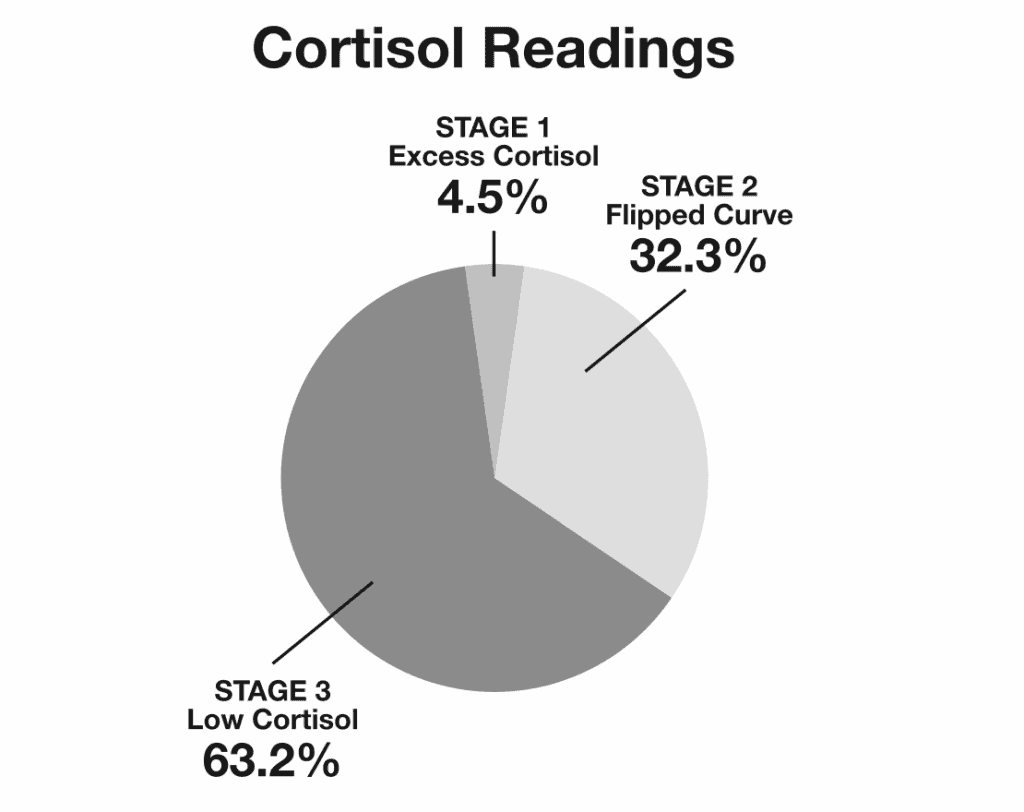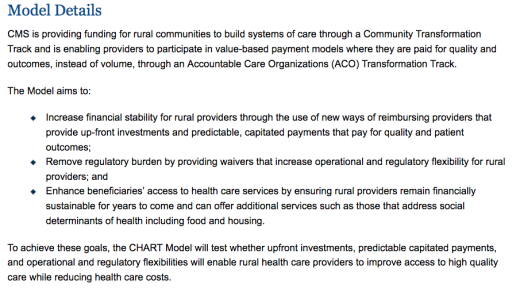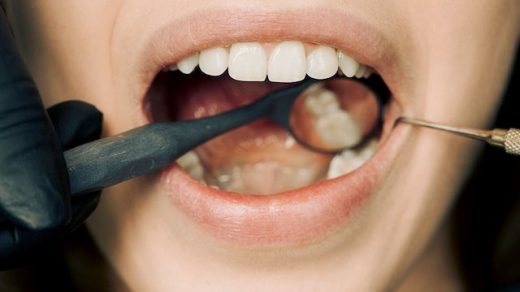I receive so many questions from my readers about which labs to get for Hashimoto’s and where to get them. Figuring out which tests you should do can be overwhelming because there’s quite a bit of information out there, and there are multiple tests that can give us an idea of our current thyroid function, as well as triggers that can reveal why the thyroid may be malfunctioning. I wrote this article in hope that it serves as a starting point to help you determine which lab tests will be most helpful for uncovering your triggers.
I highly recommend working with a Functional Medicine clinician on your thyroid journey. Functional Medicine is a medical specialty dedicated to preventing, finding, and treating underlying causes of chronic illness, rather than merely treating disease symptoms.
If you have a practitioner who is willing to work with you, that practitioner can order most of the tests listed here. If you don’t have a practitioner like this on your team, I’ve spent some time reaching out to various lab companies to set up specialized channels that will allow you to self-order your own labs at a discount. I’ll specify which tests are usually covered on insurance if you have a willing practitioner that can bill insurance, which tests can be self-ordered and then submitted to insurance, and which ones are usually an out-of-pocket expense that you may need to save for. (You can use Health Savings Accounts for most.)
In this article, I will go over the tests that I think are critical for finding the root cause(s) of your Hashimoto’s condition, including:
- Thyroid testing
- Nutritional testing
- Adrenal testing
- Gut health testing
- Infections testing
- Genetic testing
Comprehensive Thyroid Testing
Establishing a baseline for your thyroid health and testing on a regular basis is a crucial first step in monitoring your health and understanding how possible “root cause” triggers may be affecting you. If you haven’t had any of the following thyroid tests done in the last three months, I recommend having them done as soon as possible.
TSH Test
TSH is a pituitary hormone that responds to low and high amounts of circulating thyroid hormone. [1] This lab test reveals elevated TSH in people who have advanced Hashimoto’s or primary hypothyroidism. However, levels of thyroid hormone can fluctuate, so this test can potentially be misleading. It’s important to note that some people with Hashimoto’s and central hypothyroidism might have a normal reading when tested. People with Graves’ disease generally have a low TSH. [2]
You can often predict an eventual rise in TSH decades before it happens. Usually, there’s an elevation in thyroid peroxidase antibodies (TPO antibodies) and thyroglobulin antibodies (TGAb antibodies) before TSH goes up. [3] Those with Graves’ disease or thyroid cancer can have elevated thyroid antibodies, including TPO, TGAb, and TSH receptor antibodies. [4]
The TSH level considered “normal” has been skewed for years because the original data collected included elderly patients and people with compromised thyroid function. Although there is an updated range, many doctors have been slow to join in. This is why I encourage you to work with a functional medicine doctor that will treat you and not just your labs.
Functional medicine practitioners have further defined that normal reference ranges should be between 1 and 2 μIU/mL, for a healthy person not taking thyroid medications. Anecdotally, most patients feel best with a TSH between 0.5-2 μIU/mL.
The TSH test can be useful in optimizing thyroid function by ensuring the TSH levels stay within the optimal reference range while implementing lifestyle interventions and medication dosage changes.
Free T4 and Free T3 Tests
Doctors usually measure total T3 and T4, which can be misleading because T3/T4 hormones are often bound to different types of proteins and aren’t available for proper use in our body. [5] T4 (thyroxine) and T3 (triiodothyronine) are the two main thyroid hormones. T4 is known as prohormone and is 300 percent less biologically active than T3. [6] T3 is the main biologically active thyroid hormone that runs our metabolism and gives us beautiful hair and energy.
Most of the commonly prescribed thyroid medications, like Synthroid (levothyroxine), only contain T4 and need to be converted to T3 in the body. In theory, the T4 to T3 conversion works as it’s supposed to, but in reality, we may not always convert T4 to T3. Free T4 and Free T3 tests reveal the levels of available and free thyroid hormones that interact with thyroid receptors.
Some clinicians may only test for free T4, but free T3 is also important to test, as some individuals may not be converting the T4 to the active T3 hormone properly. Thus, people may have normal T4 levels, but low T3 levels.
Thyroid Peroxidase (TPO) and Thyroglobulin (Tg) Antibodies Tests
The TPOAb and TgAb tests measure the antibodies that are the markers of autoimmunity, letting us know that the immune system is launching an attack on the thyroid gland. [7] Generally, the higher the thyroid peroxidase and thyroglobulin antibody numbers, the more aggressive the autoimmune attack is on the thyroid. However, not everyone will have antibodies. (Read more about how some people with Hashimoto’s may not have any antibodies.) While not everyone with Hashimoto’s will have these antibodies, those that do can use them as a gauge of how aggressive the attack is on their thyroid, and can track the antibodies over time to see if their current lifestyle interventions are working. A reduction in thyroid antibodies is usually an indication that their lifestyle changes are helping.
Thyroid Ultrasound
An ultrasound reveals what’s happening with your thyroid. It shows whether or not you have changes consistent with Hashimoto’s, which could be characterized by changes in blood flow to the thyroid gland, a shrunken or enlarged thyroid, or even a “rubbery” thyroid. [8] If you have nodules present, then they need to be watched, and an ultrasound can spot tumors that need to be biopsied or examined. (You can read more about diagnosing thyroid cancer here.)
I recommend doing an ultrasound at least once in your lifetime. If there are issues that need monitoring, then it’s recommended to have the ultrasound done routinely, such as on an annual basis. If everything stays consistent with Hashimoto’s, you should probably have one done every five years. If you’re actively trying to regenerate thyroid tissue and are doing thyroid regeneration protocols (low level laser therapy is a promising approach), then every three months would suffice. An ultrasound will need to be ordered by your doctor.
Insurance Coverage/Interpretation: All of the thyroid tests listed above should be covered on insurance, if the practitioner who orders them is an MD, DO, PA or NP. You also have self-order options. I love the independent lab network Ulta Lab because you can self-order the labs, and later submit them to your insurance for reimbursement. (Be sure to check with your individual insurance to make sure they allow this.) This is also a wonderful option for people with a high deductible. While it’s always best to work with a practitioner for an interpretation of these labs (especially if you need a prescription), I’ve also written a comprehensive interpretation guide for your reference.
For a full guide on interpreting your thyroid tests, please see my article: Top 10 Thyroid Tests and How to Interpret Them.
Nutritional Testing
People with Hashimoto’s and thyroid disorders are at a greater risk for nutrient depletions. [9]
Nutritional deficiencies are a two way street. Nutrient deficiencies (especially abnormal ferritin levels) can contribute to thyroid symptoms and can even trigger or exacerbate thyroid disease, while thyroid disorders can lead to nutrient depletions. [10] Thyroid hormones determine our metabolism throughout the entire body. As such, the digestive tract is not spared, particularly the intestines. An insufficient amount of thyroid hormones makes nutrient extraction more difficult and less efficient, and can in itself lead to nutrient deficiencies. [11]
Additionally, most people with thyroid conditions will have low stomach acid (hydrochloric acid, or HCl), which is necessary to break down protein. [12] This can lead to a depletion of amino acids, B vitamins, iron, zinc, and other nutrients obtained from protein. [13]
This is why I recommend testing for a few key nutrients that are vital to thyroid health.
Root Cause Nutrition Panel
The Root Cause Nutrition Panel tests for B12, ferritin, vitamin D, CMP and CBC levels:
- B12 is often lacking in Hashimoto’s, and supplementation is needed because a deficiency can result in neuropathy, fatigue, or problems with digestion. [14] Optimal B12 levels should be between 700-900 pg/mL.
- Ferritin is an important protein because it stores iron. If you’re deficient in it, then you probably have symptoms like hair loss, fatigue, and poor thyroid function. [15] The optimal ferritin level for thyroid function is between 90-110 ng/mL.
- Vitamin D is a major player in immune system balance. [16] Hashimoto’s patients often have very low vitamin D ranges, and most of my clients who have gotten into remission have optimal levels of this nutrient. [17] Vitamin D levels should be between 60 and 80 ng/L for optimal thyroid receptor and immune system function.
- The CMP (complete metabolic panel) and CBC (complete blood count) will reveal your electrolyte levels, as well as how your cells are doing, how the liver and kidneys are functioning, and whether you are at risk for anemia. The results typically come back “normal” for most people with Hashimoto’s, but it’s important to have these done to rule out serious situations that may require urgent medical interventions.
Insurance Coverage/Interpretation: All of the nutrition tests listed above should be covered on insurance, if the practitioner who orders them is an MD, DO, PA or NP. You also have self-order options. I love the Ulta Lab Tests network because you can self-order the labs, and later submit them to your insurance for reimbursement. (Be sure to check with your individual insurance to make sure they allow this.) This is also a wonderful option for people with a high deductible. While it’s always best to work with a practitioner for interpretation, I do have protocols for how to address these deficiencies in Hashimoto’s Protocol, as well as a comprehensive article on the most common nutrient deficiencies in those with Hashimoto’s.
Adrenal Testing
In my experience, nine out of ten people with Hashimoto’s will be affected by adrenal dysfunction. Treating hypothyroidism without treating the adrenals is one of the biggest reasons people continue to feel exhausted despite receiving treatment with thyroid hormones.
The adrenal glands release hormones such as cortisol and adrenaline. These “stress hormones” impact many important functions throughout the body. They help establish our stress tolerance, tame inflammation, regulate blood sugar and body fat, control potassium and sodium levels (which impact blood sugar), and influence sex drive and anti-aging. [18]
There are a few potential patterns of adrenal dysfunction that include low cortisol levels all day, elevated cortisol levels, and a flipped curve, meaning cortisol is high when it should be low and vice versa.
In analyzing 148 adrenal saliva tests of symptomatic people with Hashimoto’s from 2015 to 2019, I have noticed that all of the individuals tested had some degree of adrenal dysfunction.
While seven out of 148 tested individuals showed an excess of cortisol, 91 individuals had low levels of cortisol. Furthermore, in analyzing the 50 people whose cortisol was in the “normal range,” I noticed that their cortisol curve was off, they were producing either too little cortisol in the morning, they had fluctuations at their noon/afternoon readings, or they produced too much at night, which led to morning fatigue, midday mood swings, and/or trouble sleeping at night.

These patterns of dysregulated cortisol can be consistently and accurately linked to symptoms. For example, we see excessive fatigue, low blood sugar, and low blood pressure when low cortisol is present; and we see anxiety, racing thoughts, high blood sugar, and high blood pressure when there are high levels of cortisol.
I have provided a comprehensive adrenal assessment in my new book, Adrenal Transformation Protocol, that can help you determine what stage of adrenal dysfunction you are in. All of the strategies in the book focus on getting your adrenals more balanced, and work well whether your cortisol levels are too high or too low.
That said, there are some therapeutic options that require us to know exactly where a person’s cortisol levels are before initiating, as they can greatly influence cortisol levels, such as:
- Cortisol-raising medications and/or supplements
- Hydrocortisone – This prescription medication turns into cortisol within the body. Hydrocortisone may be helpful in the late phase of adrenal dysfunction when one’s total cortisol sum is under 15 nmol/L (flatlined cortisol).
- Licorice – This herb can help boost low cortisol readings by extending the life of cortisol, giving you more energy at times when you would normally feel groggy.
- Pregnenolone – Known as the “mother hormone,” pregnenolone is the precursor to all other hormones produced by the adrenals and can help support cortisol levels.
- Adrenal glandulars – In some cases, glandular extracts of the adrenals and pituitary may be utilized to provide further support and balance. Please note that whole gland extracts may contain adrenaline, so I don’t recommend them.
- Cortisol-lowering interventions
- Phosphatidylserine – This promotes the clearance of cortisol from the body and may be utilized for overactive adrenals that produce too much cortisol.
If you wish to test your adrenals on your own to see your exact cortisol pattern, my usual recommendation is to get an adrenal saliva test kit (like the Adrenal Stress Profile test by ZRT), as the results are pretty self-explanatory.
For advanced adrenal testing, you may want to do a DUTCH test. This test assesses your adrenal function through urine testing. I like this test because it measures four or five samples throughout the day to measure cortisol levels, providing a good sense of the daily cortisol rhythm. Another benefit is that you don’t have to stop any supplements or protocols in order to do the test.
Many symptoms of hypothyroidism actually overlap with poor adrenal function, so it’s important to get an understanding of how well your adrenals are working as you work to address your own root causes.
Insurance Coverage/Interpretation: Generally, adrenal saliva and urine metabolite tests are not covered on most insurance plans because they are considered experimental. Furthermore, most conventional practitioners won’t have access to these tests, as they may not have accounts with the lab. I teach adrenal saliva test interpretation in my Hashimoto’s Self-Management Program, and I always recommend working with a functional medicine practitioner for interpretation, though I will say the results are relatively easy for the average person to understand. That said, the DUTCH test is something I’ve been working with for 8+ years and I’m still learning new things, so I would only do that test if you’re working with a seasoned practitioner!
If your labs indicate adrenal dysfunction, my book Adrenal Transformation Protocol lays out a 4-week program to help restore your adrenals.
Self Order Options
I’ve set up self-order options for you through a few different channels:
- ZRT Adrenal Saliva
- DUTCH Test
Food Sensitivity Testing
Discovering and removing reactive foods changed my life. I felt incredibly better in just three days after removing dairy. It took me some time before I was willing to commit to this lifestyle change, but if I knew then what I know now, I would have made this diet change a lot sooner!
You can identify food sensitivities by noting your reactions after eating. When we eat foods we’re sensitive to, our body gets exhausted and depleted in energy. Reactive foods trigger an inflammatory response in the GI tract, leading to malabsorption of nutrients, and can also produce intestinal permeability whenever they are eaten. [19]
Sometimes, our body will react to our food sensitivities quickly, and we may experience acid reflux, bloating, irritable bowel syndrome, palpitations, joint pain, anxiety, tingling or headaches.
It’s important to note that food sensitivities cause different types of reactions to foods than food allergies. Food allergies are immediate and often cause life-threatening reactions (picture the child who stops breathing after eating nuts), and are readily acknowledged and tested for by conventional medical doctors, especially allergists. These reactions are known as Type I hypersensitivity reactions and are governed by the IgE branch of the immune system. [20]
However, food sensitivities are considered Type IV delayed hypersensitivity reactions governed by the IgG branch of the immune system — as the name implies, they do not occur right away. [21] In fact, it can take up to four days for them to manifest, and this is one of the reasons why it’s so hard for most people to correlate food sensitivities with symptoms. For example, you may eat corn on Monday and have a panic attack on Wednesday!
Some of the most common symptoms of food sensitivities include post nasal drip, congestion, coughing, asthma, constipation, diarrhea, cramping, bloating, nausea, gas, acid reflux, burning, increased pulse, acne, eczema, itchiness, joint aches, pain, swelling, tingling, numbness, headache, dizziness, brain fog, anxiety, depression, fatigue, and insomnia. [22]
In my experience, whenever we eat foods that flare up our IgG system, this also seems to flare up thyroid antibodies.
Most people will see a dramatic reduction in gut symptoms, brain symptoms, skin breakouts, and pain by eliminating the foods they are sensitive to. Some will also see a significant reduction in thyroid antibodies.
Eliminating a food for a few days (sometimes weeks) will give us a boost in overall health. When we reintroduce a reactive food, we should notice a return of previous symptoms, which will allow us to discern which foods are causing the reactions. This is known as the Elimination Diet and is the gold standard for uncovering food sensitivities. That said, some people need to see things on “paper” to make a change, and some people have seemingly random reactions to foods that aren’t normally eliminated (I once had a reaction to ginger that caused me to have reflux, despite ginger being an herb used for reflux). Furthermore, elimination diets are a commitment in themselves to do, and it’s possible to miss reactions.
In the event that you want to see things on paper or haven’t benefited from an elimination diet (or just don’t have the bandwidth to do one), a food sensitivity test may be your best bet. Please note that not all food sensitivity tests are created equally. I’ve reviewed hundreds of these over the years, and some tests just don’t line up with people’s reactions. They produce false negatives and false positives. This is because each lab uses a different methodology (some use cooked foods, others use raw foods, etc.) to elicit responses.
I only recommend one company for reliable food sensitivity testing, and that is Alletess. Specifically, I recommend the 184 Food Allergy IgG test from Alletess or their 96 Food version.
Insurance Coverage/Interpretation: Generally, food sensitivity tests are not covered on most insurance plans because they are considered experimental, so your best bet is to either work with a practitioner who has access to them, or self-order them. While it’s always best to work with a practitioner on interpretation, food sensitivity tests are pretty self explanatory for most people, and most can implement changes based on seeing their own results. Alletess also offers people a complimentary consult with a dietician to review test results!
To learn more about testing for and addressing food sensitivities, read my article on food sensitivities and Hashimoto’s.
Self Order Options
I’ve set up self-order options for you through a few different channels:
- Alletess Food Sensitivity 184 Foods
- Alletess Food Sensitivity 96 Foods
Gut Testing
Testing for Small Intestinal Bacterial Overgrowth
Another possible culprit of your symptoms could be due to Small Intestinal Bacterial Overgrowth (SIBO). Studies have revealed that approximately 54 percent of people with hypothyroidism have SIBO, which can lead to intestinal permeability and contribute to a long list of digestive symptoms, including acid reflux, belching, bloating, and irritable bowel syndrome. [23]
Small intestinal overgrowth (SIBO) can be tested with the Small Intestinal Bacterial Overgrowth 3-Hr Lactulose-Genova Kit. Treating SIBO is a crucial component to your healing journey. In some cases, it can put your Hashimoto’s into remission and will help your sugar digestive enzymes regenerate, allowing you to better digest carbohydrates and greatly improve digestive function.
Treatment options vary and can include diets like the elemental diet, herbs such as berberine, garlic, and oil of oregano, or even antibiotics like Rifaximin. [24] Furthermore, you can start by removing dairy, as most people with SIBO are lactose intolerant. [25] (You can read more about treatment options here.) Work with your practitioner or functional medical doctor to determine the right course for you.
Insurance Coverage/Interpretation: SIBO has become more accepted by mainstream medicine in recent years. SIBO tests may be covered on most insurances; however, you may have a hard time tracking down a practice that will order them, as not many practitioners are trained in SIBO testing, results and/or treatment. The results are generally easy enough to interpret by most people, though as always, I recommend working with a practitioner to interpret results, and you can visit my article on SIBO for more information on protocols. If your insurance does allow for this test, you will need a practitioner who is able to bill insurance for ordering lab tests, such as an MD, DO, Nurse Practitioner, or Physician’s Assistant, in order for the test to be reimbursed by your insurance. This person will also need to have an account with the specialty lab. Please note that some HSA/FSAs may allow you to self order tests and get reimbursement.
Self Order Options
I’ve set up self-order options for you through a few different channels:
Comprehensive Gut Testing
A variety of gut infections and parasites have been implicated in triggering autoimmune thyroiditis, including Helicobacter pylori, Blastocystis hominis, and Yersinia enterocolitica. [26] I’ve found that my clients and readers who do not get better with dietary and nutritional interventions alone, usually have one or more gut infections present, exacerbating their condition. Finding and treating these infections often results in a significant reduction in symptoms, and can even lead to remission.
Additionally, most people with Hashimoto’s will have some degree of intestinal dysbiosis (an imbalance in the gut microbiome). [27] Like food sensitivities and SIBO, dysbiosis can cause intestinal permeability and contribute to the autoimmune process and symptoms. [28]
To identify these triggers, I recommend doing a comprehensive stool analysis, like the GI-MAP (GI Microbial Assay Plus) – Diagnostic Solutions Kit. This test checks for bacteria, fungi, parasites and viruses in the gut. It also measures bacterial balance of normal flora and digestive markers, like elastase and secretory IgA, which provide further insight on overall digestive and intestinal health.
I will say however, that as much as I love this test, it doesn’t catch every infection, and in some cases, I may recommend ordering more than one test. In general, the more tests you do, the more likely you are to pick up an infection.
Another test I like and use is the Gut Zoomer test, which is a comprehensive stool test that analyzes over 300 microorganisms in your large intestine and can help identify imbalances in your gut microbiome. It also tests for more parasites. I was intrigued by this test when a colleague shared how it revealed an exotic parasitic infection in an individual with mysterious symptoms.
A few years ago, when my son had eczema and I had some skin breakouts/chin hairs, I did some sample tests for my family of three, using both the GI-MAP and the Gut Zoomer. I submitted samples from the same stool sample to each testing company, and using these tests together, I was able to get a lot more insight. We found a pathogen on my son’s GI-MAP that was a trigger for his eczema, and a pathogen on my husband’s Gut Zoomer test that was a potential trigger for ulcerative colitis. In my case, it seemed to cause chin hairs, LOL.
After treating our whole family, my son has not had a touch of eczema since, and he goes swimming and plays at the beach. He can wear synthetic clothes, as well as use any type of sunscreen and body wash, without it affecting his skin. I used to dress him in 100% cotton and had to be really mindful about his time in the pool, his time at the beach, and even the gentlest, most organic soaps. If you have a child with eczema, please check out Dr. Sheila Kilbane’s work on childhood eczema – she is the one that helped our son be 100% eczema free. I highly recommend her and her book, Healthy Kids, Happy Moms.
Insurance Coverage/Interpretation: Comprehensive stool tests may not be covered on insurance plans because they are still considered experimental. However, check with your insurance company, as some may pay for a portion of the test if it is ordered by an MD, DO, PA or NP. Please note, your practitioner has to have an account with each specific company to order the test, and most conventional doctors won’t have access to these types of stool tests. Please also note that some HSA/FSAs may allow you to self order tests and get reimbursement.
Now I will say that the test results on these labs aren’t the easiest to read. I do cover the various infection protocols in my Hashimoto’s Self-Management Program and in my book Hashimoto’s Protocol based on extensive stool tests, but for best results, I recommend working with a practitioner to interpret results.
Self Order Options
I’ve set up self-order options for you through a few different channels:
Organic Acids Test (OAT)
The Organic Acids Test (OAT) by Mosaic Diagnostics (formerly Great Plains Lab) is a comprehensive urine test that measures markers for vitamin and mineral levels, oxidative stress, neurotransmitter levels, mold, Candida, certain gut infections, salicylates, and oxalates. Many people with chronic illnesses excrete abnormal organic acids in their urine. These metabolic byproducts can be measured and can provide insight into hormone and vitamin metabolism, intestinal wall integrity, energy cycle function, neurotransmitter metabolites, and muscle function.
I have found that this test can find many more cases of Candida as well as mold compared to other tests, and can also be useful for detecting oxalate sensitivity, salicylate sensitivity, mitochondrial dysfunction, Clostridia infections that can lead to malabsorption, as well as key nutrient deficiencies such as those related to carnitine, vitamins B5 and B6, vitamin C, and CoQ10. I have personally learned so much about how to help my clients that weren’t responding to nutrition and functional medicine protocols, by running organic acid tests. I am not exaggerating when I say that I have seen “incurable” things resolve through optimizing the key markers on an organic acids test.
Insurance Coverage/Interpretation: Generally, the OAT test is not covered by insurance because it’s still considered experimental, so your best bet is to work with a practitioner who can order it for you, or self-order it. I have spent many years and taken various trainings on understanding this test, and I am still learning new things about it with every test I run, so I HIGHLY recommend working with a seasoned practitioner to interpret results.
Self Order Options
I’ve set up self-order options for you through a few different channels:
Toxin Testing
Mold
Mold is a surprisingly common trigger of Hashimoto’s and autoimmune disease in general. [29]
I recommend the MycoTOX test, which identifies mold metabolites in your urine and determines if mold has taken up residence in your body. It can detect 11 different mycotoxins from 40 species of mold, so this can help you determine specific protocols.
The Organic Acids Test (OAT) can also be useful, as it checks for colonization of mold in your body (whether that is in your gut, your sinuses, or somewhere else), yeast overgrowth, mitochondria, certain nutrient deficiencies, and alterations in neurotransmitters.
Insurance Coverage/Interpretation: Generally, these tests are not covered by insurance because they’re still considered experimental, so your best bet is to work with a practitioner who can order it for you, or self-order it. Like the OAT test, I recommend working with a seasoned practitioner to interpret results.
Glyphosate
Glyphosate is a widely used pesticide that we ingest through eating contaminated foods and water (its use is so pervasive that it has found its way into our water supply). Research on the health impacts of glyphosate is limited and conflicting, but the company who manufactures the number one glyphosate-containing product has paid out billions of dollars in settlements over the years… and there are thousands of lawsuits against them still pending.
Generally, it seems that any toxin we are repeatedly exposed to has the potential to be harmful to our health, and I recommend reducing your exposure where possible. I’ll be sharing more on how to clear glyphosate on Instagram in the fall, so be sure to follow along if you don’t already!
You can test for levels of glyphosate with a urine test from Mosaic Laboratories.
Insurance Coverage/Interpretation: This test is not covered by insurance because it’s still considered experimental, so your best bet is to work with a practitioner who can order it for you, or self-order it. I recommend working with a seasoned practitioner to interpret results.
Self Order Options
I’ve set up self-order options for you through a few different channels:
Genetic Testing
A variation to the MTHFR (Methylenetetrahydrofolate Reductase) gene is incredibly common. In fact, it’s present in up to 55 percent of the European population, is naturally occurring, and often has no negative health consequences — unless expressed. [30]
The gene codes for the MTHFR enzyme, the enzyme that converts the amino acid homocysteine to methionine, a building block for proteins. As a result, individuals with a genetic variation and low activity of the MTHFR enzyme may present with elevated homocysteine levels, which have been associated with inflammation, heart disease, pregnancy complications, and even miscarriages. [31] This has also been associated with higher rates of Down syndrome and birth defects in offspring, as well as other issues such as depression, an increased risk of blood clots, and a higher risk of certain cancers. [32] Some of my clients with Hashimoto’s and the MTHFR gene variation have even reported having bigger blood clots during their menstrual cycles.
One of the key things to note is that this gene variation also prevents people from properly methylating, which is one of the body’s key detox processes that helps them get rid of toxins. Methylation impairment can result in an impaired ability to clear out certain toxins such as mercury and arsenic, and may lead to estrogen dominance. Symptoms like brain fog, multiple chemical sensitivities, depression, irritability, and anxiety are related to impaired methylation, and as they are all too common symptoms in Hashimoto’s, I designed the MTHFR Pathways supplement by Rootcology to help support the methylation pathways.
Insurance/Interpretation: The MTHFR gene can be identified through a DNA analysis test, such as the one from the independent lab network, Ulta Lab Tests. I love Ulta Labs because you can self-order the labs, and later submit them to your insurance for reimbursement. (Be sure to check with your individual insurance to make sure they allow this.) This is also a wonderful option for people with a high deductible. You can also order a saliva test kit from 23andme.com, and upload your results to geneticgenie.org, which will then tell you if you have the genetic variation.
Self Order Options
I’ve set up a self-order option for you through Ulta Lab.
Chronic Infection Testing
Infections are common in those with Hashimoto’s. [33] Sometimes you’ll experience symptoms of the infection, and other times you won’t even know you have it. When I started supporting people with Hashimoto’s who didn’t get better with the usual nutrition, liver, adrenal and gut protocols, I realized that some of them struggled with chronic infections that may be a bit challenging to identify. While I had four gut infections, others may have infections beyond the gut, including dental infections, viral infections and even blood-borne infections.
Did you know? Infections often trigger Hashimoto’s through molecular mimicry. [34] Molecular mimicry is a bit like it sounds. Bacterial or viral cells look a lot like the cells called self-antigens (antigens that originated in our bodies’ cells). In a way, they mimic the good guys. Our immune system gets in “fix it” mode and starts killing off the infection, but in the process, it starts killing off the cells that look a lot like the infection as well. This is a doorway for autoimmunity to usher itself in.
In regard to dental infections, your best bet is to work with an endodontist to do a CT scan, to see if your teeth (or their roots) are infected. Some clients have had infections in root canaled teeth that they didn’t even feel!
Potential infections that can be screened via a blood test and that can trigger Hashimoto’s, include Lyme disease, Epstein-Barr virus, and Cytomegalovirus. [35]
I always recommend my clients test for infections with the Root Cause Infections Panel because treating infections can alleviate a lot of symptoms, and can sometimes put Hashimoto’s into remission by identifying and then healing them. Treatment options vary between antibiotics and herbal protocols, or a mixture of both, as I note in my book Hashimoto’s Protocol. Your doctor can help you decide which is best. Read more about addressing infections here.
Insurance/Interpretation: All of the infection tests listed above should be covered by insurance, if the practitioner who orders them is an MD, DO, PA or NP. You also have self-order options. I love the Ulta Labs network because you can self-order the labs, and later submit them to your insurance for reimbursement. (Be sure to check with your individual insurance to make sure they allow this.) This is also a wonderful option for people with a high deductible. I recommend working with a practitioner to interpret results.
Self Order Options
I’ve set up a self-order option for you through Ulta Lab.
Next Steps
I hope these tests help you on your healing journey. I highly recommend working with a Functional Medicine doctor as you navigate testing, and I’ve put together a list of doctors to help you find someone in your own area. Download my free guides below!
If, for whatever reason, you are unable to get a doctor to order the tests for you, you always have the option of self-ordering the recommended tests online.
Testing can be costly, but it’s an important piece to your remission puzzle. I gave up shopping during my process to pay for certain tests. That was a big deal for me since shopping helped me cope with feeling so awful all the time. In the end, getting my Hashimoto’s into remission made the trade off so worth it! I hope ordering tests will help you uncover your root causes and feel better as well.
P.S. You can also download a free Thyroid Diet Guide, 10 thyroid-friendly recipes, and the Nutrient Depletions and Digestion chapter of my Root Cause book for free, by signing up for my weekly newsletter. You will also receive occasional updates about new research, resources, giveaways, and helpful information.
P.P.S. I love interacting with my readers on social media, and I encourage you to join my Facebook, Instagram, TikTok, and Pinterest community pages to stay on top of thyroid health updates and meet others who are following similar health journeys.
References
[1] Pirahanchi Y, Toro F, Jialal I. Physiology, Thyroid Stimulating Hormone. In: StatPearls. Treasure Island (FL): StatPearls Publishing; May 8, 2022.
[2] Ibid
[3] Zelaya AS, Stotts A, Nader S, Moreno CA. Antithyroid peroxidase antibodies in patients with high normal range thyroid stimulating hormone. Fam Med. 2010;42(2):111-115.
[4] Hyperthyroidism and graves’ disease. University of Michigan Health. https://www.uofmhealth.org/conditions-treatments/endocrinology-diabetes-and-metabolism/hyperthyroidism-and-graves-disease. Accessed September 9, 2022.; Wong SL, Grodski S, Yeung MJ, Serpell JW. Anti-thyroid antibodies as a predictor of thyroid cancer. ANZ J Surg. 2015;85(11):849-853. doi:10.1111/ans.12453
[5] Shahid MA, Ashraf MA, Sharma S. Physiology, Thyroid Hormone. In: StatPearls. Treasure Island (FL): StatPearls Publishing; May 8, 2022.
[6] Peeters RP, Visser TJ. Metabolism of Thyroid Hormone. In: Feingold KR, Anawalt B, Boyce A, et al., eds. Endotext. South Dartmouth (MA): MDText.com, Inc.; January 1, 2017.
[7] Fröhlich E, Wahl R. Thyroid Autoimmunity: Role of Anti-thyroid Antibodies in Thyroid and Extra-Thyroidal Diseases. Front Immunol. 2017;8:521. Published 2017 May 9. doi:10.3389/fimmu.2017.00521
[8] Wu G, Zou D, Cai H, Liu Y. Ultrasonography in the diagnosis of Hashimoto’s thyroiditis. Front Biosci (Landmark Ed). 2016;21(5):1006-1012. Published 2016 Jun 1. doi:10.2741/4437
[9] Hu S, Rayman MP. Multiple Nutritional Factors and the Risk of Hashimoto’s Thyroiditis. Thyroid. 2017;27(5):597-610. doi:10.1089/thy.2016.0635
[10] Hu S, Rayman MP. Multiple Nutritional Factors and the Risk of Hashimoto’s Thyroiditis. Thyroid. 2017;27(5):597-610. doi:10.1089/thy.2016.0635; Takamatsu J, Majima M, Miki K, Kuma K, Mozai T. Serum ferritin as a marker of thyroid hormone action on peripheral tissues. J Clin Endocrinol Metab. 1985;61(4):672-676. doi:10.1210/jcem-61-4-672
[11] Ebert EC. The thyroid and the gut. J Clin Gastroenterol. 2010;44(6):402-406. doi:10.1097/MCG.0b013e3181d6bc3e
[12] Ibid
[13] Guilliams TG, Drake LE. Meal-Time Supplementation with Betaine HCl for Functional Hypochlorhydria: What is the Evidence?. Integr Med (Encinitas). 2020;19(1):32-36.
[14] Langan RC, Goodbred AJ. Vitamin B12 Deficiency: Recognition and Management. Am Fam Physician. 2017;96(6):384-389.
[15] DeLoughery TG. Iron Deficiency Anemia. Med Clin North Am. 2017;101(2):319-332. doi:10.1016/j.mcna.2016.09.004
[16] Aranow C. Vitamin D and the immune system. J Investig Med. 2011;59(6):881-886. doi:10.2310/JIM.0b013e31821b8755
[17] Ucan B, Sahin M, Sayki Arslan M, et al. Vitamin D Treatment in Patients with Hashimoto’s Thyroiditis may Decrease the Development of Hypothyroidism. Int J Vitam Nutr Res. 2016;86(1-2):9-17. doi:10.1024/0300-9831/a000269
[18] De Silva DC, Wijesiriwardene B. The adrenal glands and their functions. Ceylon Med J. 2007;52(3):95-100. doi:10.4038/cmj.v52i3.969
[19] Tuck CJ, Biesiekierski JR, Schmid-Grendelmeier P, Pohl D. Food Intolerances. Nutrients. 2019;11(7):1684. Published 2019 Jul 22. doi:10.3390/nu11071684
[20] Vickery BP, Chin S, Burks AW. Pathophysiology of food allergy. Pediatr Clin North Am. 2011;58(2):363-x. doi:10.1016/j.pcl.2011.02.012
[21] Shakoor Z, AlFaifi A, AlAmro B, AlTawil LN, AlOhaly RY. Prevalence of IgG-mediated food intolerance among patients with allergic symptoms. Ann Saudi Med. 2016;36(6):386-390. doi:10.5144/0256-4947.2016.386
[22] Food intolerance: Symptoms, causes and treatment options. Cleveland Clinic. https://my.clevelandclinic.org/health/diseases/21688-food-intolerance. Published August 2021. Accessed September 9, 2022.
[23] Patil AD. Link between hypothyroidism and small intestinal bacterial overgrowth. Indian J Endocrinol Metab. 2014;18(3):307-309. doi:10.4103/2230-8210.131155
[24] Chedid V, Dhalla S, Clarke JO, et al. Herbal therapy is equivalent to rifaximin for the treatment of small intestinal bacterial overgrowth. Glob Adv Health Med. 2014;3(3):16-24. doi:10.7453/gahmj.2014.019; Ren X, Di Z, Zhang Z, et al. Chinese herbal medicine for the treatment of small intestinal bacterial overgrowth (SIBO): A protocol for systematic review and meta-analysis. Medicine (Baltimore). 2020;99(51):e23737. doi:10.1097/MD.0000000000023737; Rej A, Potter MDE, Talley NJ, Shah A, Holtmann G, Sanders DS. Evidence-Based and Emerging Diet Recommendations for Small Bowel Disorders. Am J Gastroenterol. 2022;117(6):958-964. doi:10.14309/ajg.0000000000001764
[25] Varjú P, Ystad B, Gede N, Hegyi P, Pécsi D, Czimmer J. The role of small intestinal bacterial overgrowth and false positive diagnosis of lactose intolerance in southwest Hungary-A retrospective observational study. PLoS One. 2020;15(5):e0230784. Published 2020 May 8. doi:10.1371/journal.pone.0230784
[26] Bassi V, Marino G, Iengo A, Fattoruso O, Santinelli C. Autoimmune thyroid diseases and Helicobacter pylori: the correlation is present only in Graves’s disease. World J Gastroenterol. 2012;18(10):1093-1097. doi:10.3748/wjg.v18.i10.1093; Rajič B, Arapović J, Raguž K, Bošković M, Babić SM, Maslać S. Eradication of Blastocystis hominis prevents the development of symptomatic Hashimoto’s thyroiditis: a case report. J Infect Dev Ctries. 2015;9(7):788-791. Published 2015 Jul 30. doi:10.3855/jidc.4851; Corapçioğlu D, Tonyukuk V, Kiyan M, et al. Relationship between thyroid autoimmunity and Yersinia enterocolitica antibodies. Thyroid. 2002;12(7):613-617. doi:10.1089/105072502320288483
[27] Virili C, Fallahi P, Antonelli A, Benvenga S, Centanni M. Gut microbiota and Hashimoto’s thyroiditis. Rev Endocr Metab Disord. 2018;19(4):293-300. doi:10.1007/s11154-018-9467-y
[28] Kinashi Y, Hase K. Partners in Leaky Gut Syndrome: Intestinal Dysbiosis and Autoimmunity. Front Immunol. 2021;12:673708. Published 2021 Apr 22. doi:10.3389/fimmu.2021.673708
[29] Kraft S, Buchenauer L, Polte T. Mold, Mycotoxins and a Dysregulated Immune System: A Combination of Concern?. Int J Mol Sci. 2021;22(22):12269. Published 2021 Nov 12. doi:10.3390/ijms222212269
[30] Wentz I. Hashimoto’s Protocol: A 90-Day Plan for Reversing Thyroid Symptoms and Getting Your Life Back. New York, NY: HarperCollins Publishers; 2017.
[31]Ibid
[32] O’Leary VB, Parle-McDermott A, Molloy AM, et al. MTRR and MTHFR polymorphism: link to Down syndrome?. Am J Med Genet. 2002;107(2):151-155. doi:10.1002/ajmg.10121; Kandler CE, Lam ST. Methylenetetrahydrofolate Reductase Screening in Treatment-Resistant Depression. Fed Pract. 2019;36(5):207-208.; He L, Shen Y. MTHFR C677T polymorphism and breast, ovarian cancer risk: a meta-analysis of 19,260 patients and 26,364 controls. Onco Targets Ther. 2017;10:227-238. Published 2017 Jan 6. doi:10.2147/OTT.S121472
[33] Tomer Y, Davies TF. Infection, thyroid disease, and autoimmunity. Endocr Rev. 1993;14(1):107-120. doi:10.1210/edrv-14-1-107
[34] Tomer Y, Davies TF. Infection, thyroid disease, and autoimmunity. Endocr Rev. 1993;14(1):107-120. doi:10.1210/edrv-14-1-107
[35] Dhliwayo N, Wajahat R, Havrylyan A, Moid A, Khayr W, Barsano CP. Lyme Disease: An Autoimmunity-Based “Destructive Thyroiditis” or Just Another “Non-Thyroidal Illness”?. J Endocr Soc. 2021;5(Suppl 1):A940-A941. Published 2021 May 3. doi:10.1210/jendso/bvab048.1922; Janegova A, Janega P, Rychly B, Kuracinova K, Babal P. The role of Epstein-Barr virus infection in the development of autoimmune thyroid diseases. Endokrynol Pol. 2015;66(2):132-136. doi:10.5603/EP.2015.0020; Larouche V, Tamilia M. Cytomegalovirus-mononucleosis-induced thyroiditis in an immunocompetent patient. Endocrinol Diabetes Metab Case Rep. 2017;2017:17-0142. Published 2017 Nov 24. doi:10.1530/EDM-17-0142
Note: Originally published in November 2018, this article has been revised and updated for accuracy and thoroughness.







